Petunia as a Model
Research qualities and characteristics
MAIN research topics:
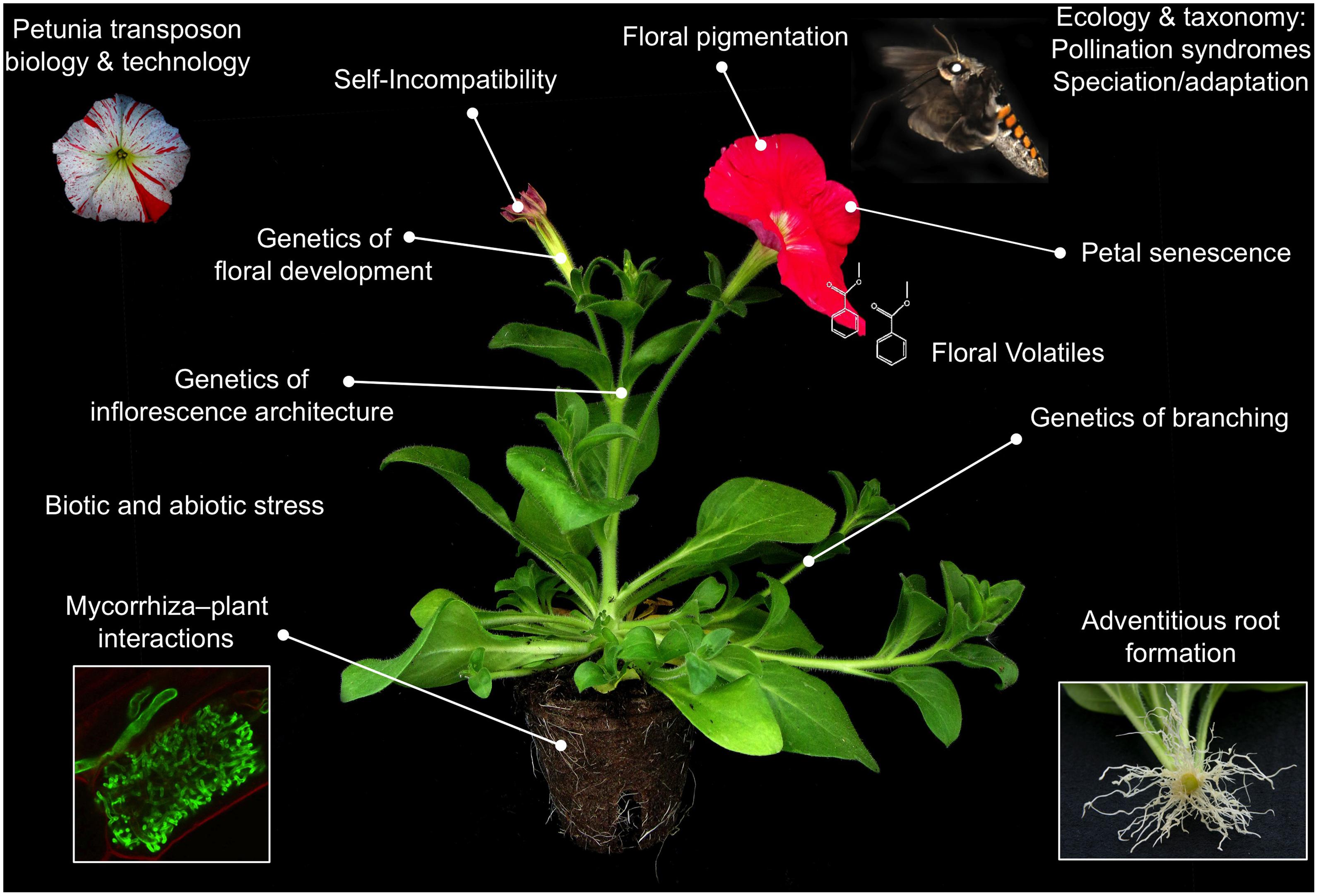
Main Qualities of the Petunia model system:
Under optimal growth conditions, a short life cycle of 3,5 months from seed to seed can be reached: Petunia likes it hot (compared to Arabidopsis), and plants should be grown at 25-28 degrees Celsius, 16h light, 8h darkness to obtain short generation times. Note that lower temperatures not only delay flowering, but also delay ripening of the seeds.
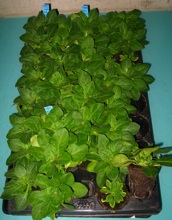
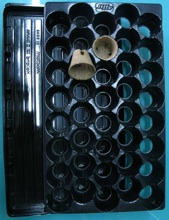
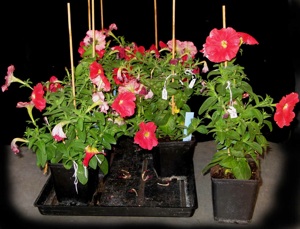
Easy propagation, both sexual and asexual
Sexual: A number of wild Petunia species are self-incompatible, however all Petunia x hybrida lines used in research are fully auto-compatible. In nature, Petunia depends on animals for pollination (mostly insects (bees, hawkmoths) and hummingbirds for some species). In a greenhouse or growth chamber devoid of insects, petunias normally do not set seed spontaneously. However, manual pollination (either selfing or crossing) is extremely easy, facilitated by its very large flowers and floral organs. A trained person can pollinate a flower in ~3 seconds, each time resulting in a capsule containing 60-150 seeds.
Asexual : Petunias can be easily propagated by cuttings (frequently used in the Petunia ornamental industry). In research, this is particularly useful for maintaining mutants that are sterile (such as floral homeotic mutants), and allow to keep specific plants of interest indefinitely. Propagation by callus culture or starting from protoplasts is also possible. Grafting Petunia is also very straightforward.
Easy transformation
Petunias are transformed using a classical leaf-disc transformation protocol, and a defined set of varieties exist that can be easily transformed such as Mitchell and V26. The wild species Petunia axillaris is also transformable. Note that VIGS (Virus Induced Gene Silencing) works very efficiently in Petunia.
Well suited for biochemical analysis
Its large leaves, flowers and floral organs allow to easily collect sufficiently large quantities of plant material for biochemical studies.
Petunia goes PETUNIOMICS!
While Petunia intrinsically has a number of qualities to be an excellent plant model (see above), in practice, working with Petunia in the past has been less straightforward, mainly due to a lack of genomics tools.
The Petunia genome(s)
Thanks to a revolution in sequencing technologies (both in capacity and cost), nowadays genome sequencing has become also feasible for financially less supported plant models and species with relatively large genome sizes such as Petunia. Members of the Petunia platform joined forces to obtain the genome sequence of Petunia axillaris and Petunia inflata (see below), the two major parental species from which modern Petunia x hybrida varieties are derived. The obtained genome sequences have been recently released (see NEWS section on the first page for LINKS).
A Petunia functional genomics platform
Determination of gene function through loss-of-function analysis is one of the cornerstones of molecular biology. Insertion mutagenesis remains one of the methods of choice to obtain mutants in hitherto unknown genes or in genes of interest. The cloning of the endogenous small non-autonomous dTph1 transposable element (Gerats et al., 1990), opened the way for insertion mutagenesis approaches in Petunia. Since this is a natural system, the obtained mutants are non-transgenic and therefore their use is not constrained by GMO rules. The Petunia Act1-dTPh1 transposable element system turned out to be extremely well suited for forward and reverse insertion screenings (Van den Broeck et al., 1998, Koes et al., 1995, Vandenbussche et al., 2003).
The same sequencing revolution now allows to create a large sequence indexed mutant collection for reverse genetics purposes (in preparation).
Petunia transcriptomes
In the near future, detailed information of the Petunia transcriptome in a range of biological processes will become available since several teams are involved in RNAseq projects to study their research topic in Petunia.
Together, these new tools will greatly facilitate the use of Petunia as a plant model in genetics and molecular biology.
Popular varieties & species used in Petunia research:
W138
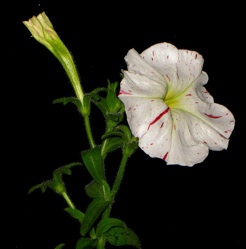
a line that is renowned for its highly active endogenous dTph1 transposable element system, and that is the main source of Petunia mutants. The line is intensively used in forward and reverse genetics approaches. Note that W138 is practically untransformable, but any F1 hybrid between W138 and other Petunia varieties are easily transformable.
Mitchell (also known as W115)
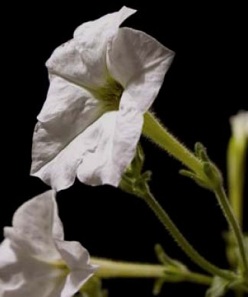
This is a doubled haploid from a hybrid between P. axillaris and the cultivar 'Rose of Heaven' resulting in superior fertility, growth, tissue culture and transformation abilities. It is the variety of choice for researchers working on volatiles and flower senescence. It is also the most popular variety to generate transgenic lines.
V26

a bluish/purple line that is also easily transformable, and that has been used for antisense and cosuppression studies, flavonoid gene isolation and EMS mutagenesis.
Wild species: Petunia inflata (left); Petunia axillaris (right)

These two wild Petunia species exhibit distinct growth habits, flowers and pollinators (the picture shows the two species grown next to each other in the greenhouse). They can be easily crossed with each other, and the genomes of both species have significantly contributed to the modern Petunia x hybrida varieties. For this reason, these species were chosen for the Petunia genome project.
Others

Hundreds of other lines are available and a reasonably updated catalogue is available at: https://www.frontiersin.org/journals/plant-science/articles/10.3389/fpls.2023.1129724/full
This page originates from The Petunia Platform hosted at Lyon (https://flower.ens-lyon.fr/petunia/platform/Home.html)